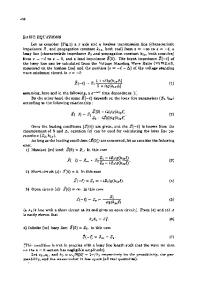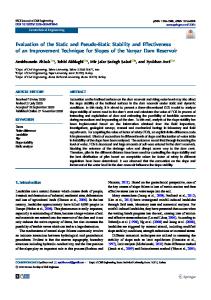An experimental technique for the evaluation of properties of ice
- PDF / 604,692 Bytes
- 7 Pages / 576 x 792 pts Page_size
- 83 Downloads / 342 Views
R. J. Scavuzzo College of Polymer Science and Polymer Engineering, The University of Akron, Akron, Ohio 44325
T. S. Srivatsan Department of Mechanical Engineering, The University of Akron, Akron, Ohio 44325 (Received 26 October 1990; accepted 8 May 1991)
The problem of ice accretion and accumulation on critical structural components of fixed wing and rotary wing aircraft structures has in recent years engendered much interest. However, the mechanical properties of the accreted impact ices are at present not adequately known and, therefore, analytical modeling of this particular material is not possible. This paper proposes a technique for experimentally determining both the modulus of elasticity and tensile strength of ice. The feasibility and accuracy of the test technique were verified by determining the properties of laboratory grown ice. Results reveal a slight degradation of ice tensile strength with an increase in test temperature. The degradation in ice tensile strength is rationalized on the basis of competing mechanistic effects involving an incipient melting of the ice at the higher test temperature and a concomitant intrinsic variation in microstructural features due to variations in freezing rate. Application of the test technique to impact ices will soon be conducted inside an icing wing tunnel.
I. INTRODUCTION The extrinsic problem of formation and accumulation of ice on structures has in recent years resurrected much interest among both the academic and technical community. The influence of ice build-up and/or accumulation on structural components such as engines and airfoils of fixed wing aircraft and blades of rotary aircraft is highly detrimental to the overall safety of the aircraft structure. On fixed wing aircraft the deposits of ice have an adverse influence on the aerodynamic characteristics. Also, ice accumulation on fixed wing aircraft tends to drastically alter the airfoil profile, thereby having an adverse effect on both the lift and drag characteristics. Uneven ice accretion and subsequent shedding on rotary wing aircraft structures such as blades of helicopters had the additional effect of causing the blade to become unbalanced with damaging vibratory forces. In recent years, several aircraft accidents have occurred as a direct consequence of impact ice accumulation on airfoils and critical aircraft structural components. With increasing emphasis on air travel coupled with the extensive use of helicopters, this problem is of concern and has created an urgent need for developing methods to overcome the exacerbating effect of impact ice accumulation. An effective mechanical deicing system helps to improve the safety of small fixed-wing aircraft besides making rotary wing aircraft more effective for operation in cold climates. In an attempt to reduce the adhesion between ice and the base surface, mechanical deicing J. Mater. Res., Vol. 6, No. 9, Sep 1991 http://journals.cambridge.org
Downloaded: 13 Mar 2015
systems are used. Thermal systems are also used for deicing an aircraft. In th
Data Loading...











